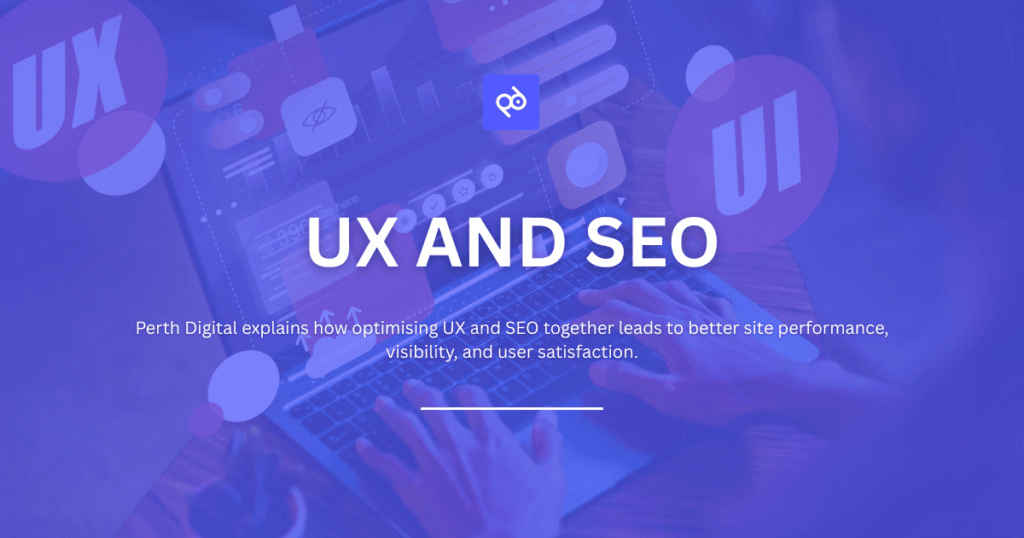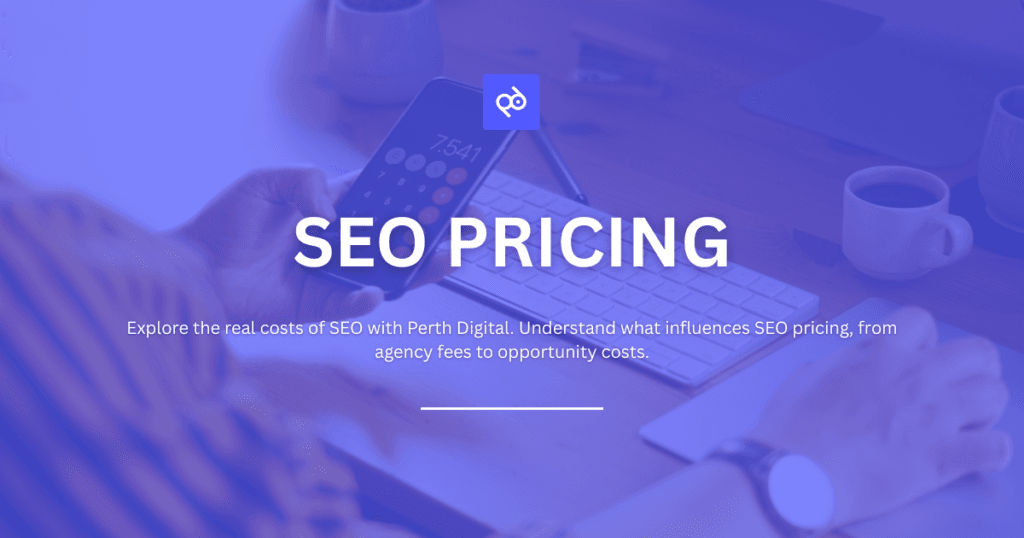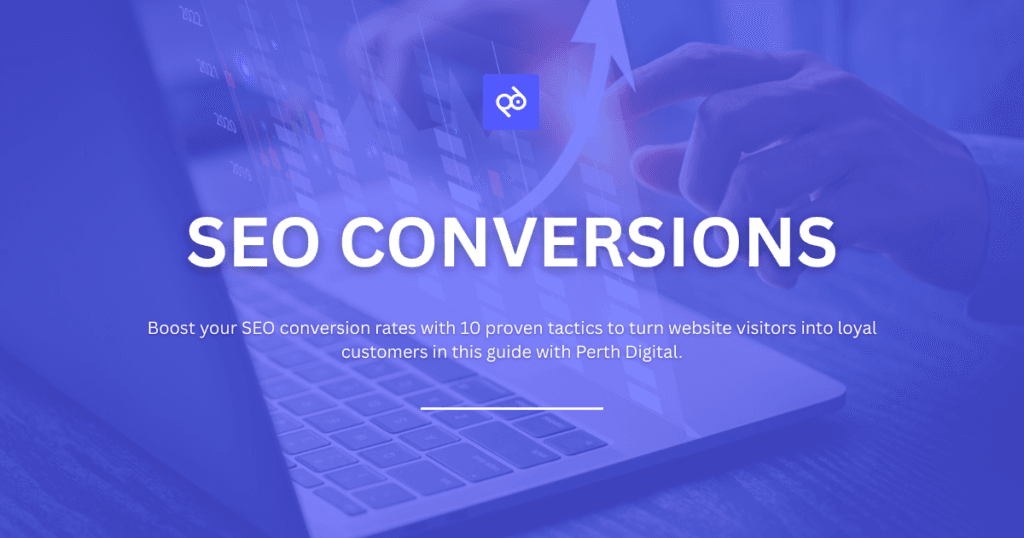Uniting UX and SEO: Creating a High-Performing Website

To build a truly effective website, both user experience (UX) and search engine optimisation (SEO) must work in harmony. While traditionally treated as separate disciplines, integrating them results in higher engagement, better usability, and improved search rankings. Search engines favour websites that users find valuable. By combining thoughtful design with SEO best practices, you can create a site that satisfies both user needs and algorithm criteria. Why UX and SEO Are Both Critical UX ensures that users can interact with your site easily, while SEO makes sure they find it in the first place. Together, they form the backbone of a high-performing website. A fast, responsive, and well-structured site not only improves user satisfaction but also ranks better on search engines like Google. Elements such as mobile compatibility, intuitive navigation, and fast loading speeds impact both how users experience your site and how search engines evaluate it. UX in Focus: Making Every Interaction Count User experience goes far beyond visual appeal. It’s about ensuring a smooth journey from entry to conversion. Key aspects include: Intuitive Navigation Good navigation ensures users can find the information they need without confusion or delay. An intuitive menu structure, clear labels, and logical page hierarchy allow visitors to move through your site effortlessly. When users don’t have to think hard about where to go next, they’re more likely to stay engaged and complete desired actions, such as filling out a form or making a purchase. Quick Load Times Speed is a non-negotiable in user experience. If your website takes more than a few seconds to load, users will likely leave before engaging with your content. Slow load times increase bounce rates and negatively impact search rankings. Optimising image sizes, reducing unnecessary scripts, and leveraging browser caching are effective ways to keep your site fast and responsive. Mobile Responsiveness With mobile devices accounting for the majority of web traffic, your site must function smoothly on all screen sizes. Mobile responsiveness means content adjusts dynamically to fit different devices without compromising usability. Buttons should be easy to tap, text must be readable without zooming, and page elements should load correctly. A consistent mobile experience is key to keeping users engaged and meeting Google’s mobile-first indexing standards. Strong UX encourages longer visits and repeat traffic, both positive signals to search engines. SEO Essentials: Visibility Starts with Optimisation SEO is your strategy for ensuring that your content reaches the right audience. Core components include: Targeted Keywords for Discoverability Keywords form the foundation of SEO by connecting your content with the search terms users are actually typing into Google. Identifying and integrating relevant keywords naturally throughout your pages, especially in headings, meta tags, and body content, helps your site appear in search results for the right audience. Keyword research ensures you’re targeting terms with strong intent and decent search volume, increasing the chances of driving quality traffic to your site. Quality Content That Answers User Queries Search engines prioritise content that provides genuine value and answers user questions. Quality content is well-researched, clearly written, and tailored to your audience’s needs. It should also be regularly updated to remain accurate and relevant. By creating informative and engaging content, you not only improve your SEO but also keep users on your site longer, an important signal for search engines. Internal Links That Guide Navigation and Distribute Page Authority Internal linking strengthens your site architecture by helping users and search engines navigate between related content. Strategically placed internal links allow you to guide visitors to deeper parts of your site, increasing their time on page and improving user experience. From an SEO perspective, internal links also help distribute link equity across your site, making it easier for search engines to understand and rank your content effectively. Search engines assess how well your site meets user needs. Good UX improves these signals, making UX and SEO mutually reinforcing. How UX Enhances SEO Performance When UX is optimised, SEO benefits naturally. Here’s how: This holistic approach aligns user satisfaction with technical performance, leading to sustainable growth in traffic and conversions. Key UX Elements That Support SEO Certain UX factors directly influence your SEO outcomes. Focus on these areas to optimise both: 1. Load Speed Slow-loading pages deter users and lower rankings. Optimise images, minimise scripts, and use caching to accelerate performance. 2. Responsive Design Ensure seamless experiences across all devices. Use flexible layouts and media queries to adapt to various screen sizes. 3. Mobile-First Indexing Google prioritises your site’s mobile version. Design with mobile navigation, content accessibility, and touch functionality in mind. 4. UX Writing and Content Intent Clear, actionable language that reflects user goals leads to more meaningful interactions. Align CTAs and content with user journeys. 5. Logical Site Architecture Organise content into intuitive categories with proper linking. This enhances both SEO crawlability and user navigation. 6. UI Design and Accessibility Ensure buttons, menus, and forms are visually intuitive and accessible. A clean interface helps guide users effortlessly. Tracking UX Metrics That Influence SEO Monitoring key UX performance indicators allows for ongoing SEO improvement. Behavioural Metrics: Technical Metrics: These metrics should be regularly reviewed to identify friction points and optimise performance. Conclusion Aligning UX and SEO is no longer optional, it’s essential. A seamless user experience complements SEO strategies, resulting in higher visibility and greater user satisfaction. By refining both aspects, you build a website that performs well, ranks higher, and serves your audience effectively. At Perth Digital, we’ll help you combine UX and SEO in a seamless and effective way. Get in touch with us today for a detailed SEO strategy catered to your needs!
SEO Pricing: What It Really Costs to Compete in Search

SEO promises visibility, traffic, and long-term growth, but only if it’s done right. And that takes an investment. From technical audits to content strategy, the full cost of SEO is often misunderstood or underestimated. At Perth Digital, we believe in transparency. So let’s break the SEO pricing all down. SEO Cost Breakdown: What You’re Really Paying For SEO isn’t free, even though organic clicks don’t come with a price tag. Real SEO success requires time, tools, expertise, and consistent effort so of course this leads to a sufficient SEO pricing. 1. Agencies and Consultants 2. In-House SEO 3. Tools and Software 4. Content Creation 5. Time and Internal Bandwidth What Impacts the Final SEO Price Tag? SEO is not one-size-fits-all. Here’s what shapes your cost: Business Size Bigger businesses = more complex websites = higher investment. Small local businesses often benefit from more targeted, cost-effective SEO. Website Scope and Project Complexity Large sites need more audits, more content, and more architecture support. E-commerce? Multi-location? Expect your costs to rise. SEO Provider’s Experience and Location Top-tier agencies charge more but they also deliver more. Local providers like Perth Digital bring insight and flexibility without the big-agency bloat. Pricing Models Existing SEO Performance Starting from scratch? You’ll need SEO audits, keyword research, and foundational fixes. Already ranking well? Maintenance and content refreshes might be all you need. Your Marketing Goals Rankings? Leads? Brand visibility? Your goals determine how aggressive (and costly) your SEO plan should be. Your Budget Be upfront about what you can spend. The best agencies, like Perth Digital, can work within your limits while still delivering results. Cheap SEO vs Quality SEO The Trap of Cheap SEO Quality SEO = Long-Term Growth SEO vs Other Channels: Where Should You Invest? Paid Ads Influencer Marketing Content Marketing Bottom line? SEO is part of a larger ecosystem, not a silver bullet. It works best when integrated thoughtfully into your full digital marketing strategy. SEO’s Hidden Cost: Opportunity Spending on SEO means not spending somewhere else. Could that money go to product development? Sales enablement? PPC? Always ask: “Is SEO the best use of this budget right now?” Sometimes the answer is yes. Sometimes, not yet. How to Decide If SEO Is Worth It If yes, then SEO might be your smartest investment. Work with Perth Digital Looking for an SEO partner? Perth Digital offers custom SEO strategies that deliver measurable growth, no fluff, just results with reasonable SEO pricing. At Perth Digital, we craft SEO strategies around your unique goals and help you maximize ROI with a clear, actionable plan. Ready to stop guessing and start growing? Get in touch with us today!
10 Proven Tactics for SEO Conversions

In today’s crowded digital marketplace, drawing people to your website is only the beginning. What truly matters is what happens after they arrive. Are they browsing aimlessly or taking meaningful actions like making a purchase or signing up for your newsletter? This is where SEO conversions step in. It’s not just about ranking high on Google; it’s about translating visibility into measurable results. What Are SEO Conversions and Why Do They Matter? SEO conversions refer to using search engine optimization not only to attract traffic but to guide that traffic toward completing specific goals. Whether it’s downloading an eBook or filling out a contact form, each action brings a user closer to becoming a customer. Think of your SEO strategy as a storefront on a busy street. It’s one thing to get foot traffic, but if no one walks in or buys anything, what’s the point? Optimizing for conversions makes that storefront so compelling that visitors have to come inside. The ultimate goal? Maximize ROI by ensuring every visitor has a higher chance of becoming a lead or a paying customer. 10 Strategies to Boost SEO Conversion Rates 1. Prioritize Page Load Speed Compress Images: Large, unoptimized images significantly slow down web pages. By compressing them without compromising quality, you reduce load times, leading to a better user experience and higher retention rates. Use Browser Caching: Browser caching allows frequent visitors to store parts of your site in their browser, which decreases the load time when they return. A faster repeat experience increases the likelihood of future conversions. Reduce Server Response Time: The time your server takes to respond to a user’s request directly affects site speed. Optimizing server performance, upgrading hosting, or using a Content Delivery Network (CDN) can dramatically improve responsiveness. 2. Optimize for Mobile Users Responsive Design: A responsive website automatically adjusts to various screen sizes, offering a seamless experience on desktops, tablets, and smartphones. This adaptability keeps users engaged regardless of the device they’re using. Touch-Friendly Buttons: On mobile devices, buttons should be large enough and spaced adequately for tapping with a finger. This prevents user frustration and encourages smoother navigation through your conversion funnel. Streamlined Mobile Navigation: Mobile users expect simplicity. Keeping menus concise and prioritizing essential content ensures they find what they need quickly, increasing the chances of conversion. 3. Use Structured Data for Better Visibility Enhanced Search Listings: Structured data allows search engines to display extra information in your listings, like reviews, prices, and FAQs. These rich snippets make your results more eye-catching and informative, improving click-through rates. Improved Content Understanding: Schema markup helps search engines understand the context of your content, which can improve your rankings for relevant queries and attract better-matched visitors who are more likely to convert. Higher Quality Traffic: By making your listings more informative, structured data appeals to users with strong intent. This increases the chance that clicks to your site will result in meaningful actions. 4. Write Irresistible Meta Titles & Descriptions Concise and Keyword-Rich: Your meta titles and descriptions should include relevant keywords while staying within character limits. This makes them appealing to both users and search engines. Highlight Value Propositions: Use your meta tags to communicate clear benefits. Whether it’s free shipping, expert tips, or quick downloads, showing value can entice users to click and convert. Encourage Action: Including verbs like “discover,” “learn,” or “buy now” within your descriptions creates urgency and encourages users to take the next step. 5. Test, Tweak, Repeat: A/B Testing Compare Variations: A/B testing involves showing two versions of a webpage element, like a CTA button or headline, to different users. Analyzing which version performs better helps refine your site for conversions. Optimize User Experience: Through repeated testing, you can determine the most effective combinations of design and content. Small changes, like button color or layout, can significantly impact user behavior. Make Informed Decisions: Instead of guessing what works, A/B testing provides real data. This scientific approach minimizes risks and maximizes the impact of your optimizations. 6. Build Trust Through Security Implement HTTPS: Securing your website with HTTPS encrypts data exchanges between your site and its visitors. This not only protects sensitive information but also signals trustworthiness to users and search engines. Display Trust Signals: Features like trust badges, customer testimonials, and clear privacy policies build credibility. When users feel safe, they are far more likely to engage and convert. Secure Transactions: For eCommerce sites, implementing secure checkout processes is essential. Users are more likely to complete purchases when they know their payment details are safe. 7. Design for Ease of Use Simplify Navigation: A clear and intuitive navigation structure helps users find what they’re looking for without confusion. This reduces frustration and keeps visitors moving toward your conversion goal. Readable Design: Choose clean fonts, appropriate spacing, and a logical content hierarchy. Making your site visually accessible improves user satisfaction and encourages prolonged engagement. Minimize Form Friction: Keep forms as short and simple as possible. Ask only for essential information to reduce drop-off rates and increase the number of completed submissions or sign-ups. 8. Strategic Link Building for Navigation and Credibility Internal Linking for Flow: Well-placed internal links guide users through your site, exposing them to related content and keeping them engaged longer. This can lead to more conversions through increased exposure to key pages. External Links for Authority: Linking to credible sources shows that you’ve done your research and builds trust with your audience. This can improve your reputation and indirectly support conversions. Boost SEO Rankings: A balanced mix of internal and external links contributes to better search engine rankings. Higher visibility in search means more qualified traffic, and with the right structure, higher conversions. 9. Tap into the Power of Local SEO Include Business Info: Displaying your address, phone number, and location map reassures visitors that you’re a real, local business they can trust. This simple step greatly increases conversion potential for local users. Encourage “Near Me” Discoverability: Local SEO tactics help you appear in location-based searches,